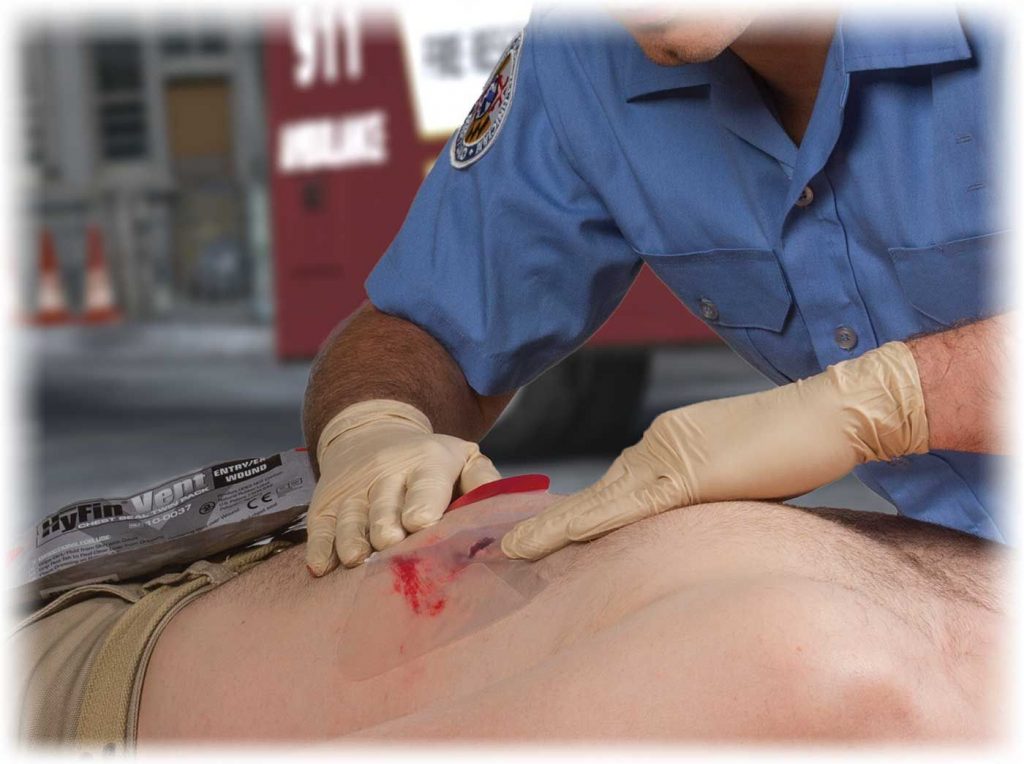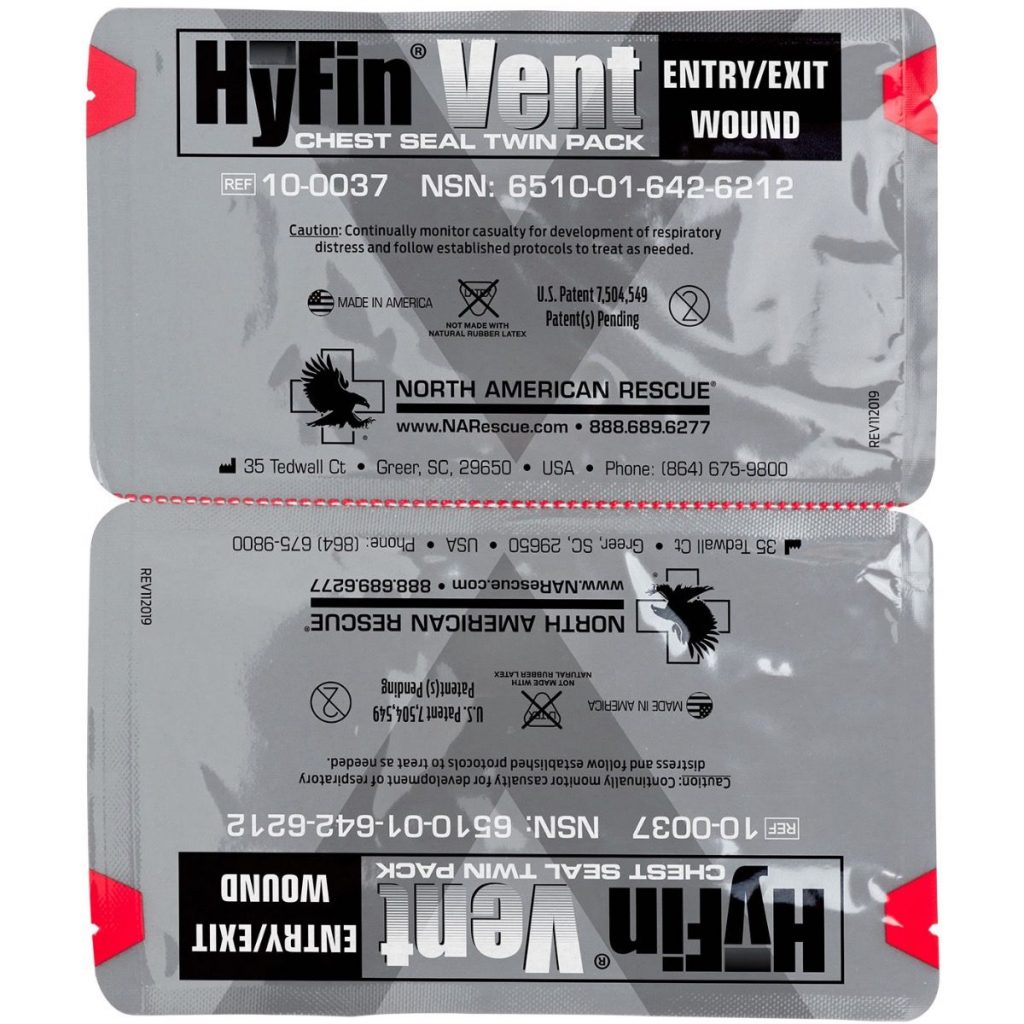What If You Don’t Have a Tourniquet or Trauma Kit? Pt 3: Sucking Chest Wounds

It’s impossible to be prepared at all times and knowing what to do when you don’t have any medical gear can be the literal difference between life and death.
Even a paramedic with a fully stocked ambulance has finite supplies, and if the situation is bad enough, anyone could easily run out.
If you haven’t already read what to do for bleeding, make sure you check that out before you continue with this article so everything makes sense.
Sucking chest wounds are treated quickly and effectively with the quick application of a chest seal. Penetrating trauma to the chest can cause a Tension Pneumothorax (TPT), a potentially life-threatening condition, but how can you treat it with no medical gear?
First, lets talk about what a TPT is.
A TPT is when air becomes trapped inside the chest cavity (pleural space) because of a compromise in the chest wall, often due to a puncture. Because of the nature of the wound, air is able to enter the chest cavity, but not exit.
Every time the casualty breaths in (inspires), more air is trapped until pressure builds and the heart is no longer able to beat adequately enough to oxygenate the body. And the lungs are no longer able to fully inflate, leading to further complications to the intake of oxygen.
Fortunately, this can take a little time depending on the size of the wound. I am unable to locate a credible authority There are no hard fast numbers, but it can take up to 20 minutes to develop after the time of injury. As long as the casualty gets to the doctor quickly, there is a lower risk since treatment is simple and effective.
Look for signs and symptoms of:
- Difficulty/painful breathing, (Dyspnea)
- Only one side of the chest moving (unequal rise and fall)
- Fast breathing (tachypnea)
- Increased heart rate (tachycardia)
- Cool clammy skin
- Tracheal deviation (the trachea pulls away from the injured side due to pressure build up). Late sign**
- Jugular vein distension” (JVD). (The added pressure inside the chest cavity causes the jugular vein to become noticeably engorged. Late sign**

Combined with an injury to the trunk, from “Neck to Navel” indicates a TPT and may be treated temporarily with a needle decompression if the care giver has been well trained in how.
But since this isn’t as pressing as controlling bleeding, make sure you take care of that before getting out your chest seals.
If you don’t have any, can you make your own chest seal? Yes, but you might not have to.
If there’s only one hole in the chest, simply covering the wound with your hand to prevent air from entering the chest cavity can be enough to prevent a TPT from developing. If the casualty is alert and verbal, have them cover the wound with their own hand so you’re free to work.
If the wound came from a gunshot, make sure to be on the lookout for an exit wound as well. There won’t always be one, and if there is, it might not be directly behind the entry wound. Bullets can bounce around after entering the body and can end up in odd places, but if there’s two wounds, you need to patch both or you haven’t solved the problem.
If the situation doesn’t allow for you to maintain a constant hand over the wound, it’s simple to make your own if you happen to be near some tape.
There isn’t a place on this planet you can go that’s free of plastic. Cutting a piece into a section large enough to cover the wound and taped into place is proved to be very effective.
Tape all but one side of your plastic piece so there is a way for trapped air to escape from the chest cavity.
Getting the improvised occlusive dressing to stay in place is usually the most challenging aspect. Sweat, blood, and dirt tend to make it difficult unless you have some quality duct tape handy.
This is why having a purpose made chest seal at the ready is so useful. Since they’re just sticky squares of rubber, the only harm done to a casualty who wasn’t really in danger of a TPT is a little lost chest hair. So don’t be afraid to use them.
If your improvised occlusive dressing doesn’t seem to be working because you can still hear air sucking through the wound, then just place your hand (or the casualty’s if they can be trusted) over the wound site and wait for EMS to arrive.
